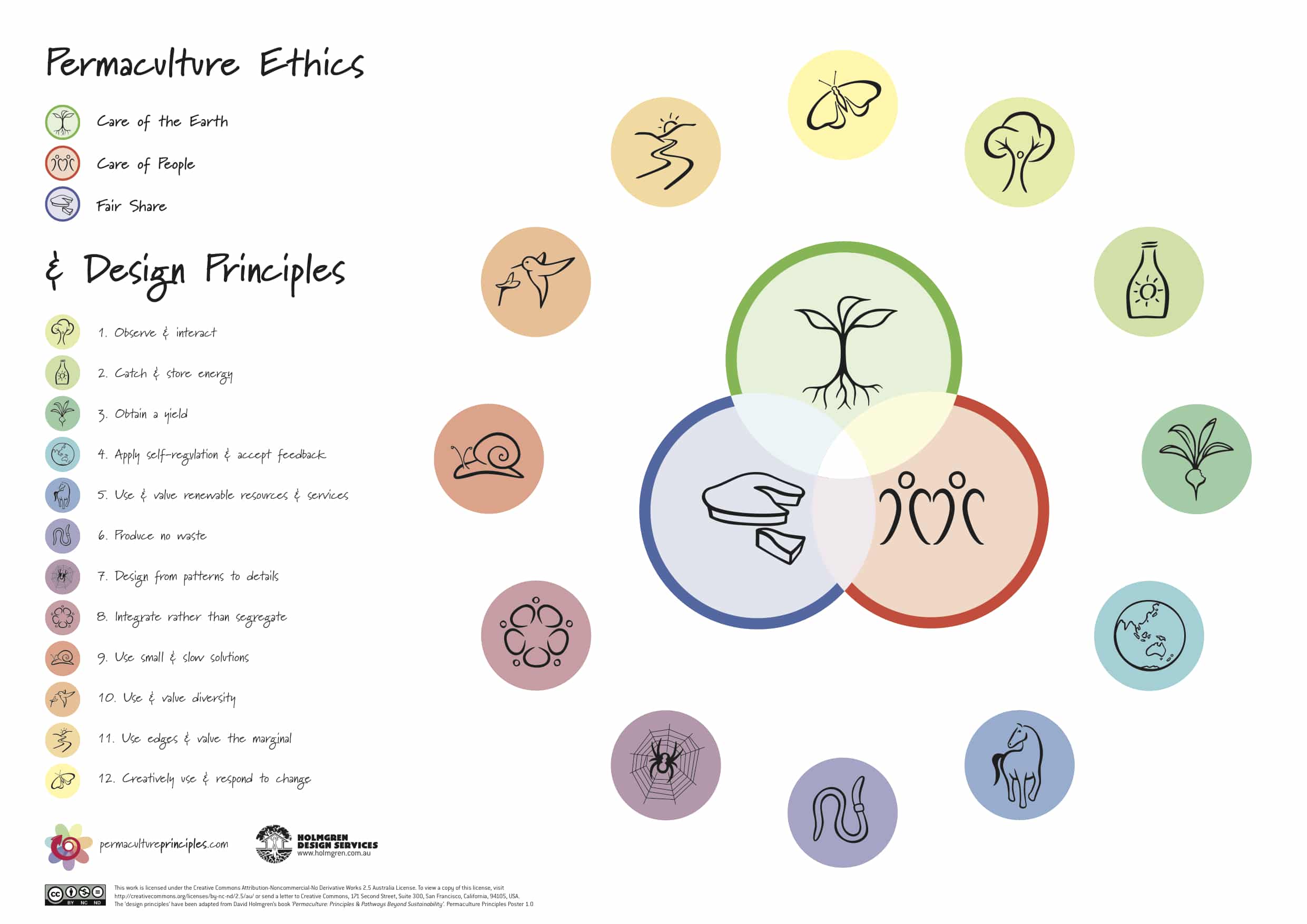The second week of our Winter 2011 Permaculture Design Certificate, we were lucky enough to have David Holmgren, co-originator of Permaculture, presenting for the whole day. I don’t think anyone will forget this day in a hurry.
Apart from walking us through his 12 principles with elegance, enthusiasm and what is clearly an extremely deep appreciation for how natural system function, David emphasized what is for me a new way of explaining what the heck permaculture is: ecological design theory applied to an everyday context. Right on.
David Holmgren’s Permaculture Principles: a brief overview:
David Holmgren is an ecologist, ecological design engineer and writer. He is perhaps most well known as co-originator of the permaculture concept with Bill Mollison. Through the spread of permaculture around the world, his environmental principles have exerted a global influence.
Here’s a couple of the more tasty notes I scribbled down while listening:
Small is Beautiful: a study of economics as if people mattered by Ernst Friedrich Schumacher (1973) – a great influence on David’s early thinking
– Throughout history, there have always been ‘cultures of place’, denoted by the bioregion and immediate community over many, many generations. We are now experiencing being the ‘first de-cultured people on the planet’.
– Ecological design is a literacy just like numeracy, etc
– Farming was the last important human activity to become industrialised
Designing sustainable small farms & homesteads by John Quinney. An important article published in Mother Earth News 1984 which outlined a list of design principles, which influenced permaculture theory heavily.
– We’ll know we’ve got a clue about our energy resources when we declare fossil fuel deposits as sacred sites, and fight for their preservation like we do for the preservation of species (whales, trees, etc).
– The front lawn is a misguided affirmation of affluence. ‘I don’t need to grow my own food – my food supply is so secure that i can dedicate my immediate surroundings to indicating my status only.’
– Australia probably has a coal peak of 2047, unlike the rest of the world’s peak coal, which is happening right now.
– Seed saving of multi-coloured corn is emblematic of permaculture design: you are selecting for diversity (of colour), to maintain purity (of multi-coloured strain), in order to protect diversity (of this corn species in the wider gamut of corn varieties).
– Exotic vigour: the term coined around the observation that exotic species sometimes thrive in foreign environments is a way quite impossible to how they grow in their native environments. Examples: Australian Eucalypts in Brazil, Californian Radiata pine in Australia. A phenomenon not fully understood.
– The soil is a massive interface system between the lithosphere and the atmosphere.
– Peak everything by Richard Heinberg (book extract). And a youtube video talking about the topics.
Following on from this weekend, David and his partner Su proceeded on a whirlwind tour of Sydney and surrounds.
After doing it tough in Balmain, David went on to speak at a Weeds and wild nature forum. That weekend he and Su presented a day at Sydney Permaculture North’s Bushfire forum, and they capped off the tour by presenting on Bushfires and communities at Permaculture Blue Mountains (the videos for which are here).
Then David and Su chugged off on the train back to their idyllic-sounding life at Melliodora in Dayelsford, Victoria, leaving a trail of dazed people thinking very hard in new ways about many things…
Resources:
- Holmgren Design Services website
- David Holmgren’s writings
- Permaculture principles website
- Holmgren Permaculture teaching kits
Incensed? Hooked? Maybe just curious? Have a look at our upcoming permaculture design courses and get in on the knowledge.
You might also like to have a look at:
- Our other PDC weekly resources
- Our other posts tagged permaculture
















